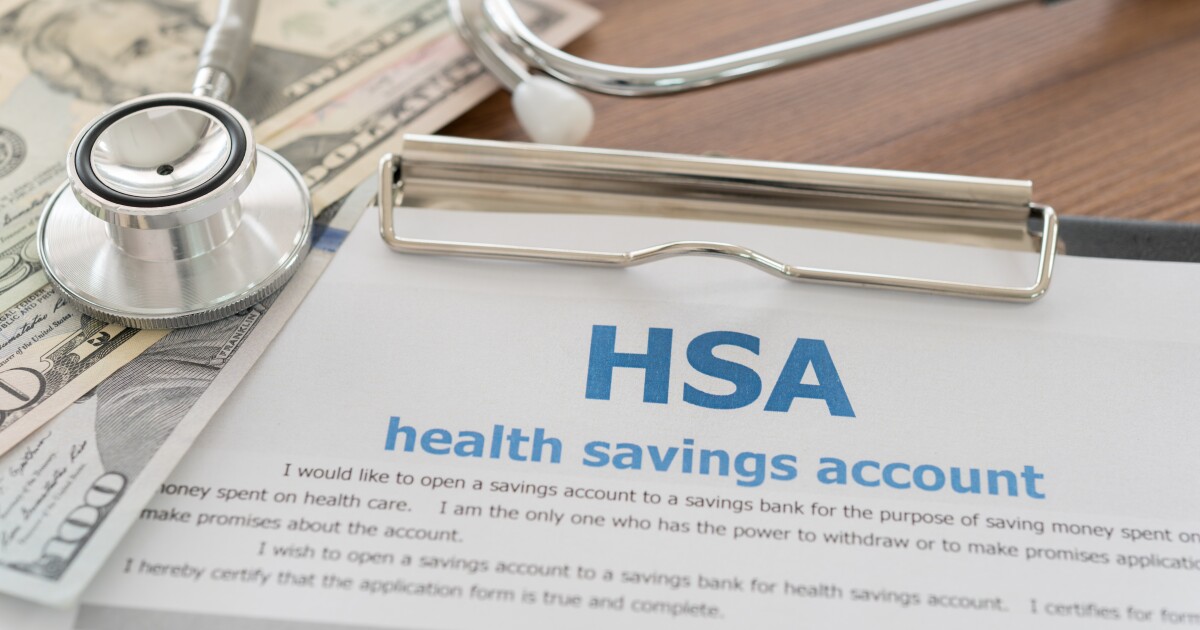Morningstar’s annual report card for the providers on the menu of so-called “triple-tax-free” health savings accounts is in, and most did not earn very high grades.
Only one HSA firm — Fidelity Investments — out of 11 reviewed by the independent investment research firm as part of its yearly “Health Savings Account Landscape” report last month got an assessment of being “high” quality for the purposes of paying for medical costs and acting as a long-term investment account. Just three others — HealthEquity, HSA Bank and Saturna — received “above average” ratings on both measures.
First American Bank, Lively, UMB, Associated Bank, NueSynergy, Optum and Bank of America came out “average” or “below average” in covering health costs or being a long-term investment account. Importantly, Morningstar used public data and a survey, so the report noted that it was not evaluating specific employer-offered HSAs that vary based on their size and relationships with providers.
Low interest rates for client cash holdings and higher relative fees for custody and the underlying investments drove the poor grades for most of the providers, according to Greg Carlson, a senior manager research analyst for equity strategy with Morningstar and one of the authors of the report. An average expense ratio of 24 basis points on the available investment funds in the plans offered one bright spot from the report, since the decline from 29 bps last year added up to “a significant one-year decline” and “the biggest change we’ve seen,” he said.
“Part of it is Fidelity just beating everyone in terms of fees pretty much, and that’s a big advantage,” Carlson said. “They have come down across the board. Just like in other areas of asset management, competition has intensified on the fee side.”
READ MORE: IRS adjusts HSA amounts for 2025
The often-discussed advantages of HSAs from getting pretax contributions, untaxed investment returns and tax- and penalty-free withdrawals for medical purposes come with some challenges. Only high-deductible health insurance plans are eligible, every provider besides Fidelity and Lively require participants to put a minimum level of assets into the HSA before they can do any investing, and Fidelity is the only one out of the group of 11 to pay interest rates on cash assets above 1%.
HSAs are often “sub-par regarding interest on cash balances,” said planner Autumn Knutson of Tulsa, Oklahoma-based Styled Wealth.
“HSAs are a powerful vehicle for tax-advantaged healthcare savings, but most consumers are stuck with whatever provider their employer chooses if they want to benefit from payroll deductions toward their HSA,” Knutson said in an email. “As if the nuances of understanding how to qualify for, contribute to and invest within an HSA were not tricky enough, an additional layer of complexity for HSA providers is within the interface, navigating minimum cash balance requirements and fees for other services or selections.”
HSA assets have soared by a factor of 22 between 2006 and 2023 to $123 billion as the share of workers using employer-sponsored plans that have high-deductible health insurance plans jumped from 7% to 31%. HSAs started in 2003 as an effort “to make high-deductible plans more attractive,” according to the report.
In another finding that’s consistent with other studies but crucial to financial advisors and tax professionals working with clients who have HSAs, an average of 74% of the plan participants among surveyed providers used the accounts to cover medical expenses but didn’t take advantage of the ability to invest through them.
The participants “may not be able to meet and maintain the minimum investment account balances most providers require” or have enough left over for stocks and bonds after paying medical bills, the report said. The average American had about $13,500 in healthcare expenses in 2022, according to Centers for Medicare and Medicaid Services figures cited by Morningstar.
“Plans have gotten better in important ways,” the report said. “Both investment and spending account fees have continued to decline, for example, and investment option quality keeps improving. HSA transparency and ease of use could still improve, though, and costs — particularly investing and custodial fees — could drop further. The process of investigating, signing up for and funding accounts remains complicated. Fewer top providers charge maintenance fees, but some still do — and they often require minimum account balances before participants can invest. Most providers also pay paltry interest rates on spending account balances below relatively lofty levels, even two years after rates began rising.”
READ MORE: HSAs should be promoted as way to supplement retirement savings
While high-deductible plan participants can use a different HSA provider than the one chosen by their employer, that one is “likely most convenient and financially advantageous” because “your contributions are deducted before Social Security and Medicare taxes,” Knutson noted. More often, the participants will move to an alternate provider once they change employers.
As for the investing side of HSAs — or the lack thereof — “some of the biggest problems I see” in the accounts are savers who are “accruing large balances and not investing the cash amounts at all,” Knutson said.
“This is a function less on the HSA provider and more on investors understanding that funds in an HSA are not invested by default, but rather need to be invested after they are contributed,” she said. “Just as 401(k)’s now have a default investment option to protect investors from having decades of funds accidentally uninvested, an idea for improving HSAs could be to have any excess beyond a planned out-of-pocket max be invested, as this would cover any expenses incurred through health insurance and allow any excess amounts saved into an HSA to be invested for longer term goals.”
Companies and lawmakers “can do more to motivate HSA participants to take advantage of their plans’ investment features,” according to the Morningstar report.
“While employers can automatically enroll employees in employer-sponsored retirement plans, the government has not yet allowed them to do the same for employees who are eligible for HSAs. Automatic enrollment has boosted retirement plan participation,” the report said. “Another barrier to increased HSA investing is that participants sometimes aren’t aware of investment-account options. Providers could simplify the account-opening process and better teach participants both how to transfer between the two account types and about the benefits of long-term investing. Providers that offer better guidance and tools tend to have higher average investment account balances.”
In addition, Morningstar gave advisors, tax pros and their clients some best practices to seek out from their providers when using HSAs. For medical expenses, they should look for “no ongoing maintenance fees,” “competitive interest rates on account balances,” “few or no additional fees” and “FDIC insurance on the spending account.”
When thinking about the long-term investment side of HSAs, they should find providers who have “investment menus that cover core areas and limit overlap and volatile or niche strategies,” “investment options that earn Morningstar Medalist Ratings of bronze or higher,” “low fees” and “no minimum balance in a spending account required before investing.”
READ MORE: The HSA ‘deathbed drawdown’: Making tax-efficient distributions when there isn’t much time
Advisors can guide clients through their HSA decisions with an eye toward the lowest-cost investments and an understanding that even a core bond fund could bring higher return than cash, according to Carlson. One method to lock in some intermediate and longer-term gains would be to set aside the “money you’ll need in the short term,” he said.
“Obviously, health care costs are high and rising, so you do want to make sure that, first and foremost, you’re not taking a lot of risk with money you may need to use immediately or in the short term,” Carlson said. “You want to probably try to separate pools of money.”


 Economics1 week ago
Economics1 week ago
 Accounting1 week ago
Accounting1 week ago
 Economics1 week ago
Economics1 week ago
 Blog Post6 days ago
Blog Post6 days ago
 Personal Finance1 week ago
Personal Finance1 week ago
 Economics1 week ago
Economics1 week ago
 Personal Finance1 week ago
Personal Finance1 week ago
 Accounting1 week ago
Accounting1 week ago












